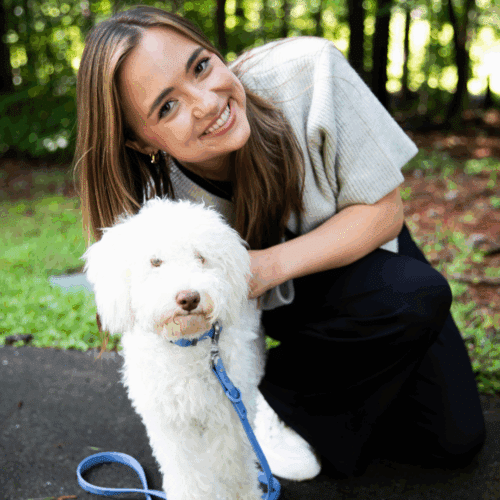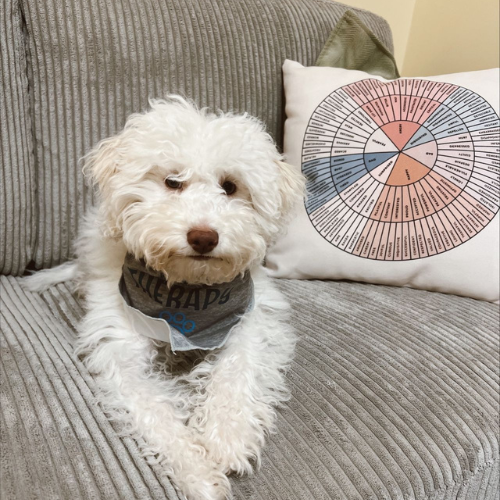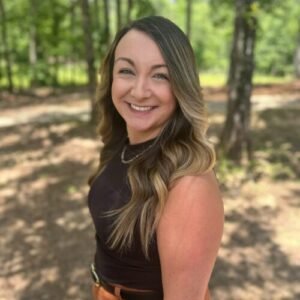Co-occurring Substance Use Disorders
Many individuals with eating disorders use substances to numb emotional pain or stress, often worsening the severity and complexity of their disordered eating behaviors.
Treatment for co-occurring substance use disorders at Magnolia Creek
At Magnolia Creek, we support lasting recovery by addressing co-occurring substance use disorders alongside eating disorders. Our integrated, dual diagnosis treatment approach includes individual and group therapy sessions, consultations with on-site clinicians, and experiential activities that nurture creativity, spirituality, and connection.
Grounded in 12-step principles, clients attend weekly meetings to establish a foundation for sobriety, strengthen their support networks, and navigate the challenges of early recovery in a compassionate and structured environment.
About co-occurring substance use disorders
- Approximately 21.9% of people with eating disorders experience a substance use disorder at some point in their lifetime.
- Among people with anorexia nervosa, an estimated 16% struggle with drug or alcohol dependency.
- For people with binge eating disorder, the lifetime risk of developing alcohol use disorder is 1.5 times greater compared to people without BED.
- Approximately 10,200 deaths occur each year as a direct result of eating disorders, equating to one life lost every 52 minutes.
FAQs about co-occurring substance use disorders
What is a co-occurring substance use disorder?
Substance use disorders frequently co-occur with eating disorders, with substances often used as a means to cope with emotional distress, suppress appetite, or manage body image concerns. This dual struggle can intensify the physical and psychological risks associated with both conditions, complicating the recovery process.
Commonly abused substances include:
Alcohol
The most common co-occurring substance use disorder among individuals with eating disorders; may be used to cope with anxiety, depression, or social pressure; can worsen nutritional deficiencies and increase medical risks
Stimulants (e.g., amphetamines, cocaine, ADHD medications)
Often misused for appetite suppression or weight control; can lead to dangerous cardiovascular effects, mood instability, and addiction
Opioids
May be used to numb emotional or physical pain; interferes with digestion, emotional regulation, and recovery motivation
Cannabis
Sometimes used to manage anxiety or stimulate appetite; may disrupt motivation, memory, and emotional processing
Sedatives, hypnotics, or anxiolytics (e.g., benzodiazepines)
Used to self-medicate anxiety, panic, or insomnia; risk of dependence and overdose, especially in malnourished individuals
Laxatives, diuretics, or diet pills
Common among individuals with bulimia or purging behaviors, which can lead to severe electrolyte imbalances and organ damage
Substance use and disordered eating often reinforce one another, making dual-diagnosis treatment essential for lasting recovery.
What are signs and symptoms of substance use disorder?
Common signs and symptoms of substance use disorder in adults and adolescents with eating disorders are:
- Using substances (alcohol, drugs, or prescriptions) to numb emotional pain, control appetite, or manage anxiety
- Secretive behavior around food, eating, or substance use
- Mood swings, increased irritability, or emotional outbursts
- Neglecting hygiene, appearance, or responsibilities at school, work, or home
- Physical changes such as bloodshot eyes, fatigue, unexplained weight fluctuations, or track marks
- Increased isolation or withdrawal from family and friends
- Risk-taking behaviors, including unsafe sex or driving under the influence
- Legal issues or disciplinary problems tied to substance use
- Needing larger amounts of a substance to achieve the same effect (tolerance)
- Experiencing physical or psychological withdrawal symptoms
Adolescents may also exhibit:
- Sudden drop in academic performance or school attendance
- Changes in peer groups or social circles
- Defiance or hostility toward authority figures
- Sneaking out, staying out late, or breaking house rules
- Hiding substances in personal belongings or bedrooms
When is it time to seek professional support for co-occurring disorders?
It’s time to seek professional support when disordered eating is accompanied by emotional distress, mood changes, or substance use that interferes with daily life. Early intervention is vital — seeking help when symptoms first appear can prevent further complications and support long-term recovery. If you or a loved one is struggling with an eating disorder alongside a substance use issue, specialized, integrated treatment from a dually licensed provider is essential.
Find peace, purpose, and eating disorder recovery at Magnolia Creek — where compassionate, evidence-based care meets the healing power of nature.
Step into healing at your own pace.
Magnolia Creek offers two distinct levels of care — residential treatment and partial hospitalization — with a focus on tailoring each client’s treatment plan to their unique diagnosis and recovery goals.
How We Treat
More Resources

Navigating College with an Eating Disorder

Why Dietitians Matter in Eating Disorder Treatment

The Toxic Power of the Thin Ideal + Thin Privilege
Renew your hope at Magnolia Creek.
Contact us today or complete our form to connect with an admissions specialist who will guide you to the right program. Healing is just a call away.
Your privacy is our priority. All communication is completely confidential.













































